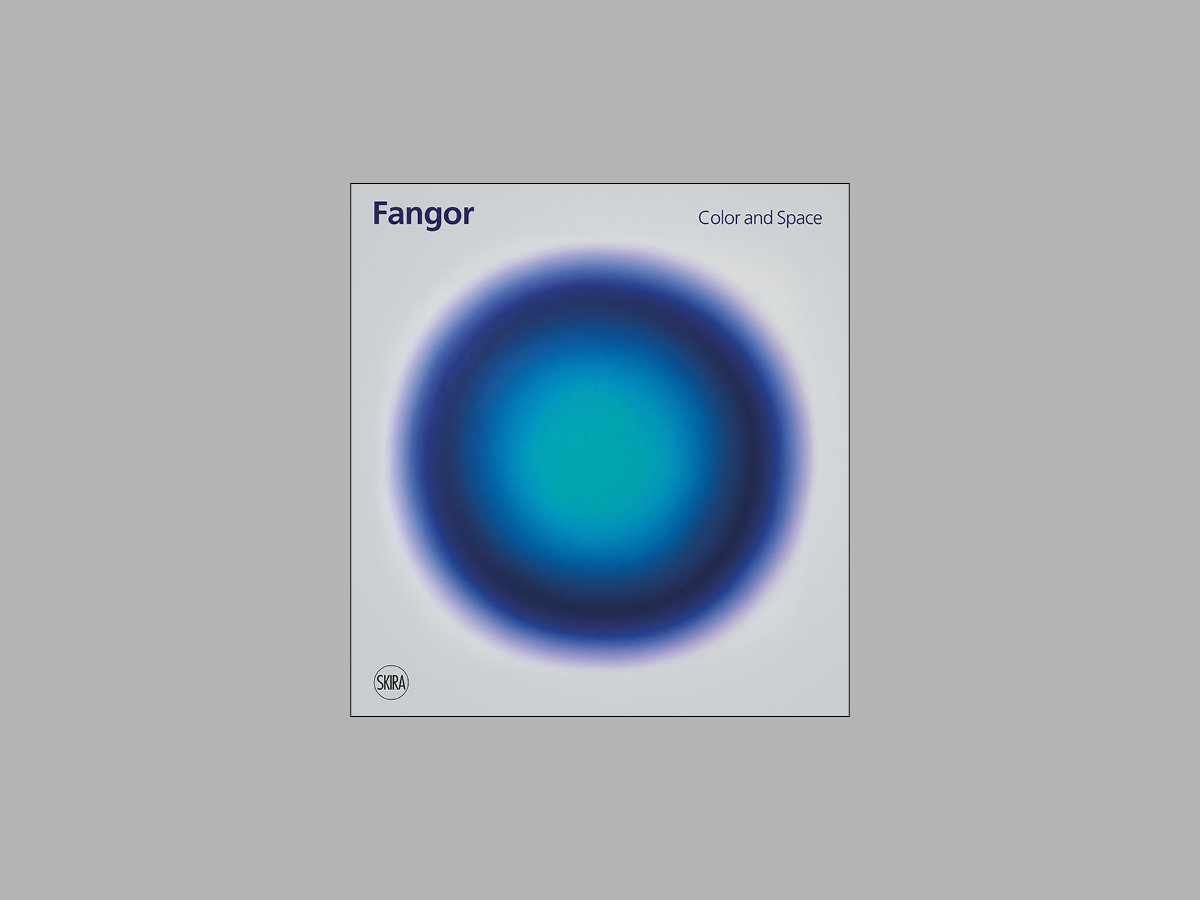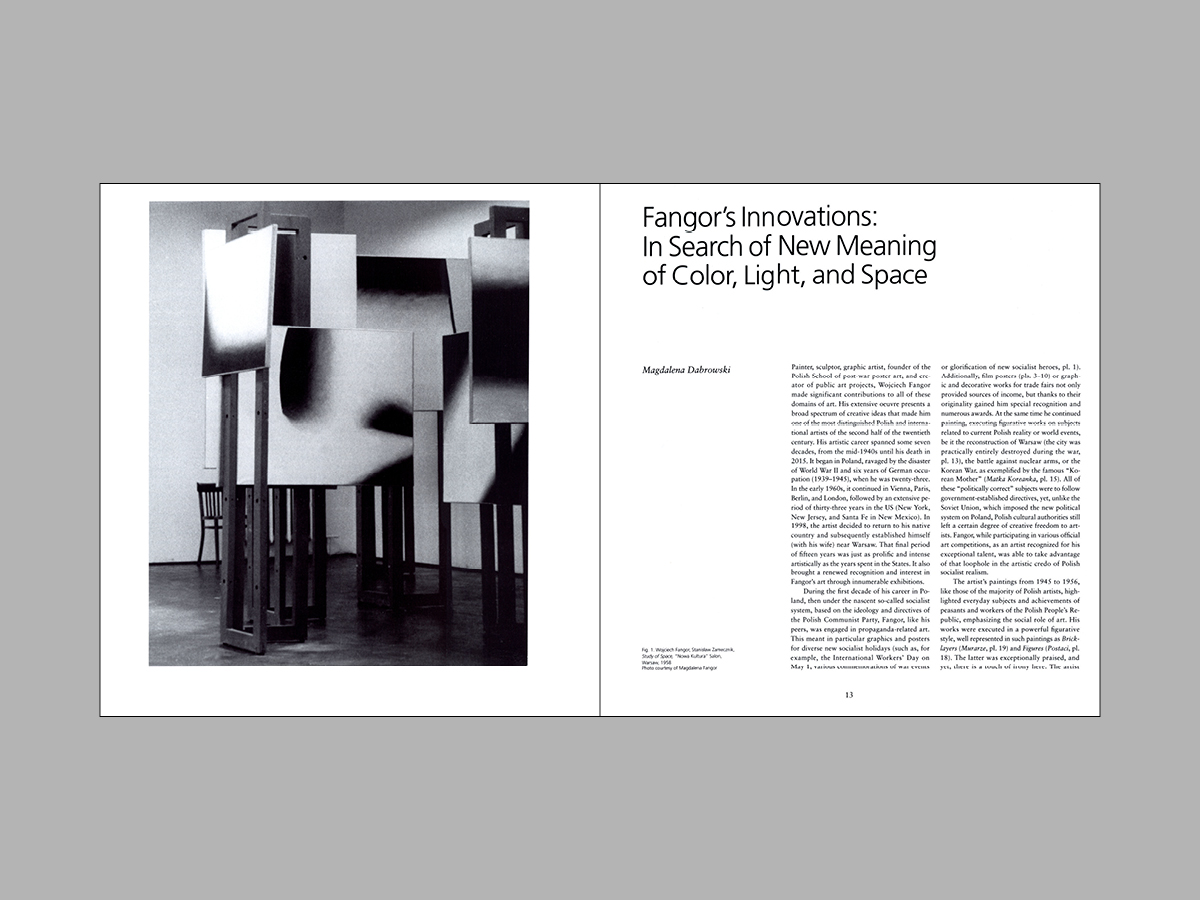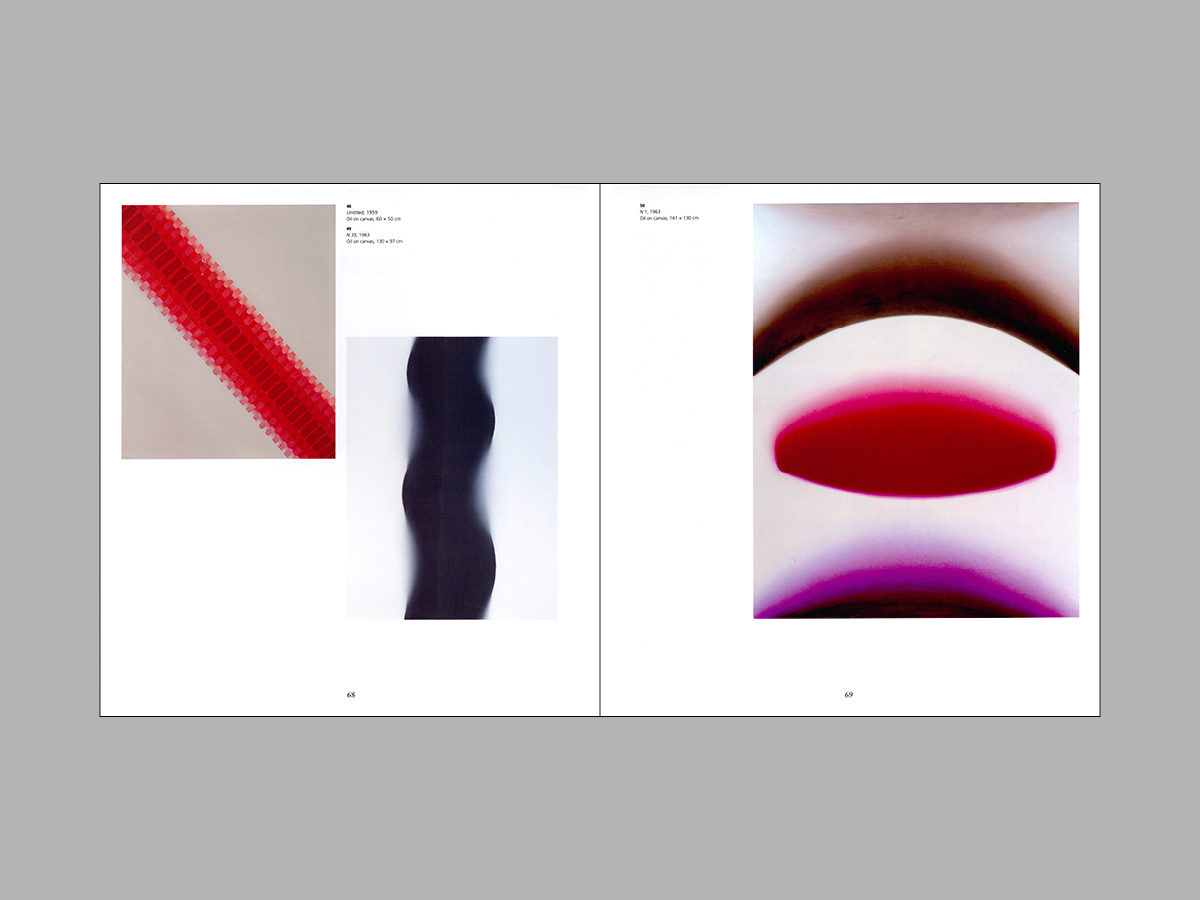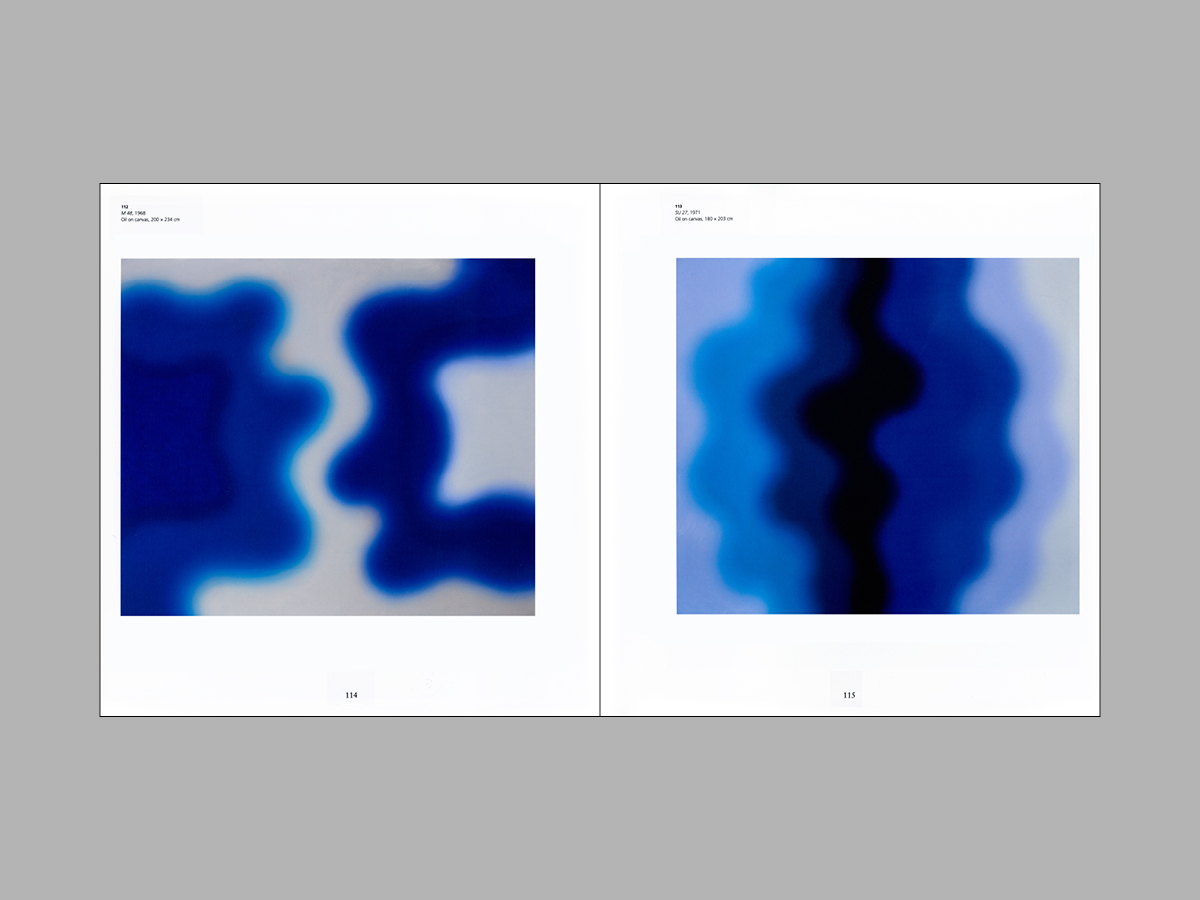Fangor
Color and space
Hans Ulrich Obrist
Edited by Magdalena Dabrowski
External links Skira





The first international publication dedicated to one of Poland’s most prominent artists. A painter, poster designer and sculptor, Wojciech Fangor (1922–2015) is a household name in 20th-century Polish art, alongside Magdalena Abakanowicz, Roman Opalka and Tadeusz Kantor. Initially interested in Cubism, during the Stalinist years he followed the officially approved doctrine of Socialist Realism. After Stalin’s death, Fangor focused on architectural and industrial design as well as on posters, being one of the founders of the Polish school of poster design, which won international acclaim in the 1960s. He also achieved recognition for his abstract paintings, initially in monochromatic colours, featuring circles, ellipses and waves.
Fangor was one of the most distinctive painters to emerge in postwar Poland. Known for his blurred circles, amoebas and cloud shapes in dense, saturated colors that seemed to throb and swirl, Fangor first became known in the United States in the 1960s, when his work was included in two group exhibitions at the Museum of Modern Art in New York. In 1970, he had a one-man show at the Guggenheim Museum.
Magdalena Dabrowski, American art historian, PhD, independent scholar, curator and art consultant for modern and contemporary art. Former Senior Curator at the Museum of Modern Art, New York, she later served as Special Consultant in the Department of Modern and Contemporary Art at the Metropolitan Museum of Art in New York. Mark Rosenthal, American art historian and critic. Hans Ulrich Obrist is an art curator, critic and historian of art. He is Artistic Director at the Serpentine Galleries, London. He is the author of London Dialogues.